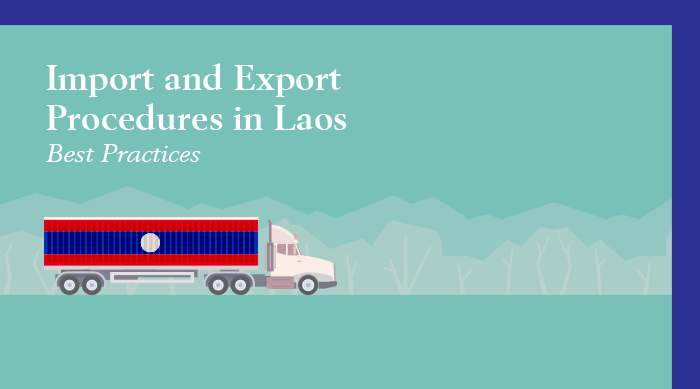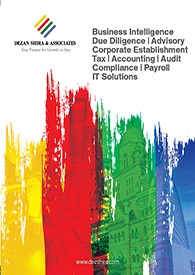Import and Export Procedures in Laos – Best Practices
By Bradley Dunseith

Officially the Lao Peoples’ Democratic Republic (Lao PDR), landlocked Laos borders China, Cambodia, Myanmar, Thailand, and Vietnam. In 2015, Laos exported US$3.81 billion worth of goods and imported US$6.54 billion. Laos’ main export destinations include Thailand, China, Vietnam, India, and Japan. Laos’ top import sources include Thailand, China, Vietnam, South Korea, and Japan. In this article we explain best practices for importing into and exporting out of Laos.
![]() RELATED: Pre-Investment and Market Entry Advisory from Dezan Shira & Associates
RELATED: Pre-Investment and Market Entry Advisory from Dezan Shira & Associates
Registration
All importers and exporters must first register with the Ministry of Industry and Commerce’s Department of Enterprise Registration and Management. Not all imported or exported products require a license. To determine the criteria for license requirements, Laos uses three categories based on the product for import or export. These are:
- Products which do not require a license;
- Products requiring a license under the automatic route; and
- Products requiring a license under the non-automatic route.
Importers and exporters can secure these licenses from the Department of Imports and Exports (DIMEX). Products under the automatic route are licensed for the purpose of collecting statistical information whereas products under the non-automatic route require permission from DIMEX to be either imported or exported.
Export goods subject to automatic licensing
- Logs, timber, and wood products;
- Rice; and
- Minerals and mineral products.
Export goods subject to non-automatic licensing
- Logs, timber, and wood products sourced from natural forests; and
- Gold bars.
Import goods subject to automatic licensing
- Road vehicles;
- Petroleum and gas;
- Logs, timber, and wood products;
- Rice;
- Steel bars and transformed steel;
- Cement, mortar, concrete;
- Printing products;
- Mineral and mineral products; and
- Timber and logging machines.
Import goods subject to non-automatic licensing
- Guns and bullets used for sporting purposes;
- Explosives used for industrial purposes; and
- Gold bars.
Documents
According to the Lao PDR Trade Portal, Laos has installed Automated Systems for Customs Data (ASYCUDA) designed by the United Nations Conference on Trade and Development (UNCTAD) at 11 major international border check points. Crossing over to Laos at one of these major border checks will allow importers and exporters to benefit from a digitized, single-window clearance system.
For importers
Businesses importing into Laos must provide the following documents when their goods arrive:
- Commercial Invoice;
- Carriers report;
- Packing list;
- Copy of business license;
- Copy of tax registration;
- Import customs declaration; and
- Copy of exporter license or registration.
For exporters
Businesses exporting out of Laos must provide the following documents before their goods depart:
- Bill of Lading;
- Commercial Invoice;
- Packing list;
- Road transit document;
- Export Customs declaration;
- Copy of tax registration; and
- Copy of business license.
Additional documents for certain imports and exports
For certain technical products, importers must obtain a permit that these products adhere to technical standards fromthe Ministry of Science and Technology. Similarly, imported food items must attain a phytosanitary certificate from the Ministry of Agriculture and Forestry. Importers and exporters bringing pharmaceuticals or chemical products in or out of Laos must obtain a permit from the Food and Drug Department of the Ministry of Public Health. A complete list of goods along with any further documentation can be found here.
Tariffs and Taxes
Laos uses the World Customs Organization’s 8-digit Harmonized System (HS) Code . Laos’ tariff classifications confirm with the Association of Southeast Asian Nations’ (ASEAN) Harmonized Tariff Nomenclature (AHTN). Laos is continuing work to reduce its tariffs for ASEAN imports to zero; the country has until 2018 to fulfill these obligations under the ASEAN Trade in Goods Agreement (ATIGA).
For importers
Laos applies a tariff rate between 0 and 40 percent. Tariff rates for non-agricultural goods exported by countries outside ASEAN averages at 8.3 percent. Agricultural goods exported into Laos by non-ASEAN members averages at 14.9 percent. Laos applies a value added tax (VAT) to most imports at 10 percent. For a complete good-by-good breakdown of tariff rates for imports, visit the website of Lao PDR’s National Trade Portal.
For exporters
Goods exported out of Laos do not incur taxes. The only exception is natural resources or unfinished goods made out of natural resources – these goods incur a VAT of 10 percent.
Temporary Imports
Goods needed for the manufacture or processing of other export-oriented products, material required for the supervision of projects, as well as material used in an exhibition or educational projects are exempt from tariffs under the Temporary Imports regime.
Warehouse Regime
Under Laos’ Warehouse Regime, imported goods not going into immediate circulation can delay paying tariffs until said goods are brought into the market. Importers must submit an import declaration under the Warehouse Regime in order to delay tariffs.
Special Economic Zones
Laos has two principle special economic zones (SEZs): the Savan-Seno SEZ in Central Laos’ Savannakhet Province and the Golden Triangle SEZ in the sub-Mekong region near the borders with Myanmar, Thailand, and China. Under Laos’ Law on Investment Promotion, 2016, businesses operation out of these SEZs can import raw material and production equipment without paying import duties and are exempt from VAT on both imports and exports.
Free trade agreements
Laos is a partner to the ASEAN Trade in Goods Agreement and a member of five regional FTAs through the ASEAN with:
- Australia;
- China;
- India;
- Japan; and
- Korea.
Laos has also signed bilateral trade agreements with:
- Argentina;
- Belarus;
- Cambodia;
- China;
- India;
- Kuwait;
- Malaysia;
- Mongolia;
- Myanmar;
- North Korea;
- Russia;
- Thailand;
- Turkey; and
- Vietnam
In order to avail the benefits of these FTAs and bilateral agreements, exporters and importers must apply for a Certificate of Origin.
 RELATED: Import and Export Procedures in Cambodia – Best Practices
RELATED: Import and Export Procedures in Cambodia – Best Practices
Conclusion
As Laos continues to integrate its market and regulatory system within ASEAN, the ease of doing business for both importers and exporters will continue to improve. But, corruption still permeates many layers of bureaucracy in Laos while the lack of English speaking officials can put a strain on effective communication.
Utilizing experts with up-to-date local knowledge can help exporters and importers to not only avoid customs-related delays and frustrations but also ensure that import and export activity occurs quickly and remains profitable. Local experts at Dezan Shira & Associates possess years of experience supporting the establishment and growth of businesses across ASEAN, and are well situated to guide companies through Laos’ constantly evolving regulatory landscape.
|
 Dezan Shira & Associates Brochure
Dezan Shira & Associates Brochure
Dezan Shira & Associates is a pan-Asia, multi-disciplinary professional services firm, providing legal, tax and operational advisory to international corporate investors. Operational throughout China, ASEAN and India, our mission is to guide foreign companies through Asia’s complex regulatory environment and assist them with all aspects of establishing, maintaining and growing their business operations in the region. This brochure provides an overview of the services and expertise Dezan Shira & Associates can provide.
 An Introduction to Doing Business in ASEAN 2017
An Introduction to Doing Business in ASEAN 2017
An Introduction to Doing Business in ASEAN 2017 introduces the fundamentals of investing in the 10-nation ASEAN bloc, concentrating on economics, trade, corporate establishment, and taxation. We also include the latest development news for each country, with the intent to provide an executive assessment of the varying component parts of ASEAN, assessing each member state and providing the most up-to-date economic and demographic data on each.
 How to Set Up in the Philippines
How to Set Up in the Philippines
In this issue of ASEAN Briefing magazine, we provide an introduction to the Philippines as well as analyze the various market entry options available for investors interested in expanding to the island nation. We also discuss the step-by-step process for setting up a business entity in the Philippines, highlighting the various statutory requirements for overseas investors. Finally, we explore the potential for Singapore to serve as a viable base to administer investors’ Philippine operations.
- Previous Article How to Set Up in the Philippines – New Issue of ASEAN Briefing Magazine
- Next Article Tourism Industry in the Philippines: Part I








